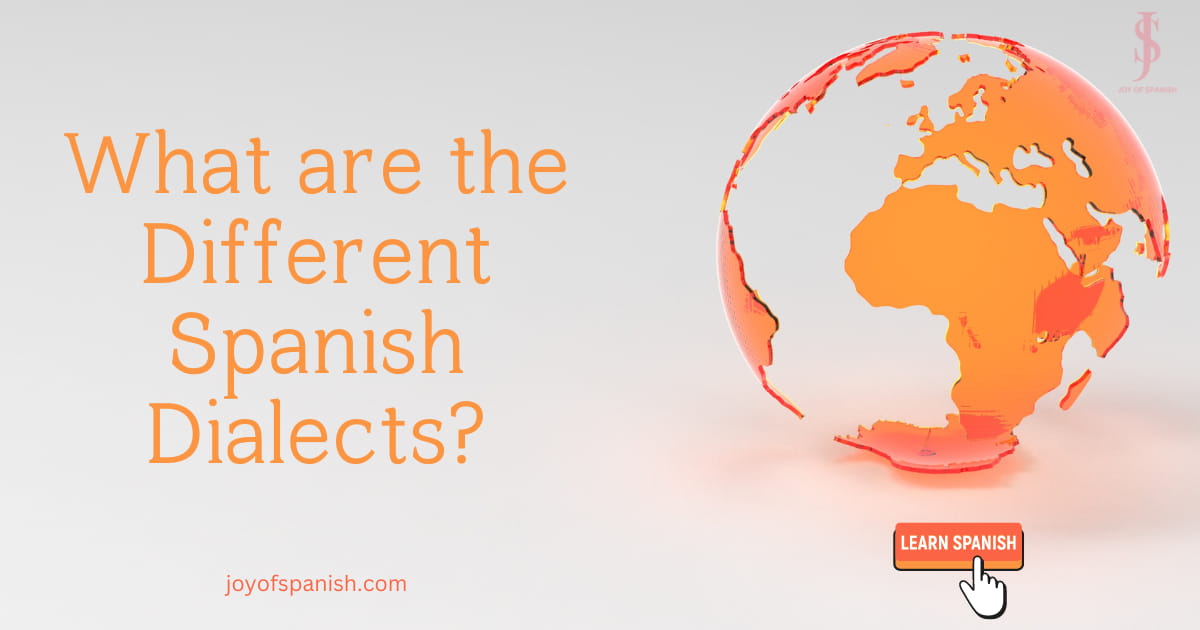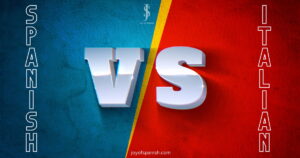Spanish is one of the most widely spoken native languages in the world. With nearly 600 million speakers, it is the official language of 21 countries. The overall global presence makes Spanish beneficial to learn.
One can find Spanish speakers across a vast area stretching from Madrid to Buenos Aires to San Francisco. As a result, it has countless dialects, accents, slang, varieties, and nuances unique to each region.
It is common to compare the Spanish of Spain with that of Latin America. Yet, there are many other factors to weigh when categorizing these dialects since it has many global variations.
To better understand the geographical distribution of the language and its dialects, let’s take a detailed look!
Table of Contents
What is a Spanish Dialect?

A dialect is the form and part of language spoken in a specific area by a particular group.
It’s a regional variation of a language. We also call idiom, local language, vernacular, patois, non-standard language, slang, etc.
The dialect differs from other regional ways of speaking. It has its own grammar, expressions, vocabulary, and pronunciation. Still, all dialects belong and are part of a primary language.
Like other languages, most Spanish variants are sizably mutually intelligible. Understanding different varieties becomes simple with a solid command of standard Spanish.
The variation comprises words, phrases, jargon, and sounds specific to a particular region.
Most Spanish dialects are alike. Still, a few individuals have unique features. It is often unclear whether something is a different dialect or a language. That is why language learning is a complex process.
Spanish can be broadly categorized into two types.
The first is Peninsular Spanish, spoken in Spain and Iberian, European, or Castilian. The second is Latin American Spanish.
Many dialects, creoles, and deviations are spoken in many countries and across five continents.
20+ Most Spoken Spanish Varieties
Do you want to know how many Spanish dialects exist and where they come from? Well, I have covered all in this article.
Let us delve into the diverse linguistic deviations of the Spanish language worldwide.
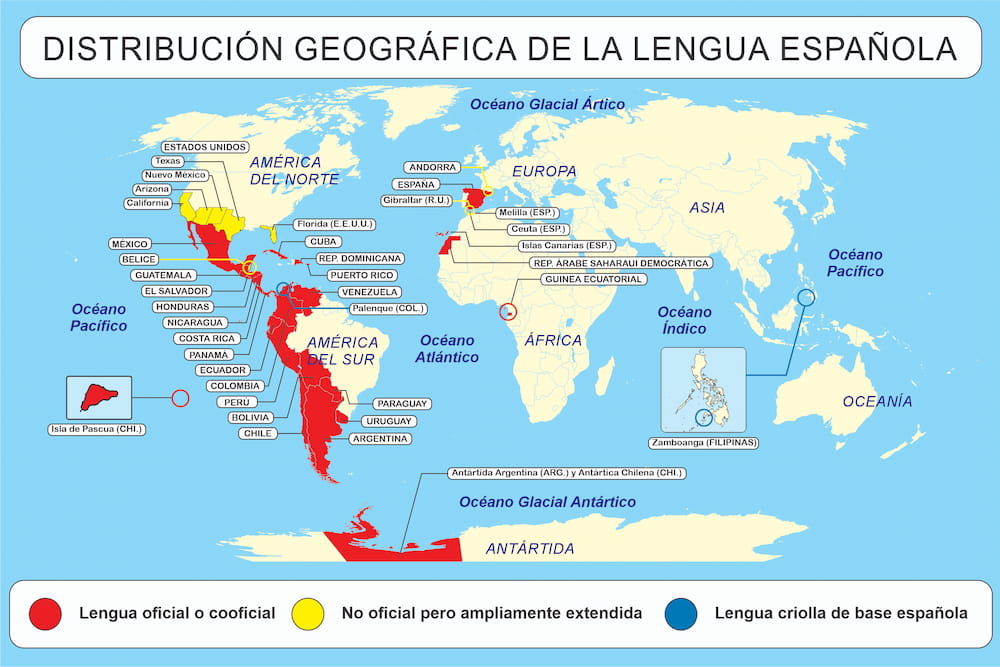
A. Peninsular Spanish
The Peninsular, also known as European, Iberian, and Spanish of Spain. This variant is commonly spoken in Europe and is the most widely taught Spanish-language version globally.
There are some different types. It’s time to uncover it.
1. Standard or Castilian Spanish
Castilian Spanish is a kind of language spoken in Spain’s north and central regions. This type serves as the basis for modern standard Spanish.
This dialect caused the spread of the language. Many linguists call it the original Spanish language for this reason.
The Spanish language originates from Vulgar Latin. It was through the Roman conquest in the 2nd and 3rd centuries BC that it could reach the Iberian Peninsula. This makes up Spain and Portugal as we know them today.
During the 13th century, King Alfonso X declared this version as the official language of the government of Spain. Hence, they used or translated all the administration and documents in Castilian.
Due to this political reason, Castilian became Spain’s authorized language, i.e., De jure. It ended up being the most renowned and commonly spoken dialect of Spanish globally.
The national language is referred to as Español by the Spanish Royal Academy, publications, and all government bodies. Español and Castellano are interchangeable and equally correct.
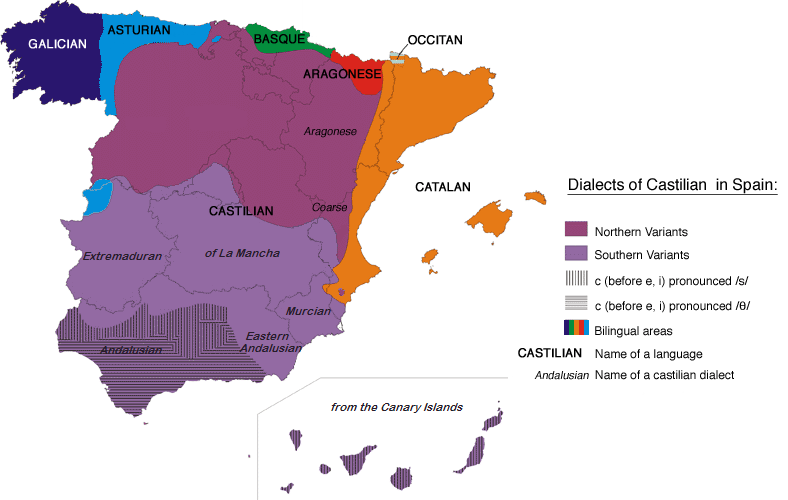
Standard or Castilian Spanish is the perfect choice for those targeting Europe or wanting to learn for jobs. This variant is the foundation for the DELE language exam and DIE.
2. Canarian Spanish
The inhabitants of the Canary Islands speak the Canarian variant of Spanish.
The dialects of the Canary Islands and Caribbean Spanish are notably alike. It contains the aspirated ‘s,’ elided consonants, and how to pronounce the letter’ h.’
Canarian has a lot of Portuguese words because of Portugal’s past influence on the islands.
3. Andalusian Spanish
Andalusian dialects are more beneficial in Southern Spain than favored Castilian in the North and Central regions. This is the second most well-known dialect spoken in Andalusia, Ceuta, Gibraltar, and Melilla.
It’s common to drop the ‘S’ and final consonants at the end of words. It is often known to avoid the sounds of ‘R’ and ‘D.’ The effect is that the flow and pronunciation are smoother than other languages.
It’s not just sounds that change but also words, phrases, and slang. Even though Andalusian is a Spanish dialect, it differs from the northern version. This frequently leads to it looking like a completely separate language.
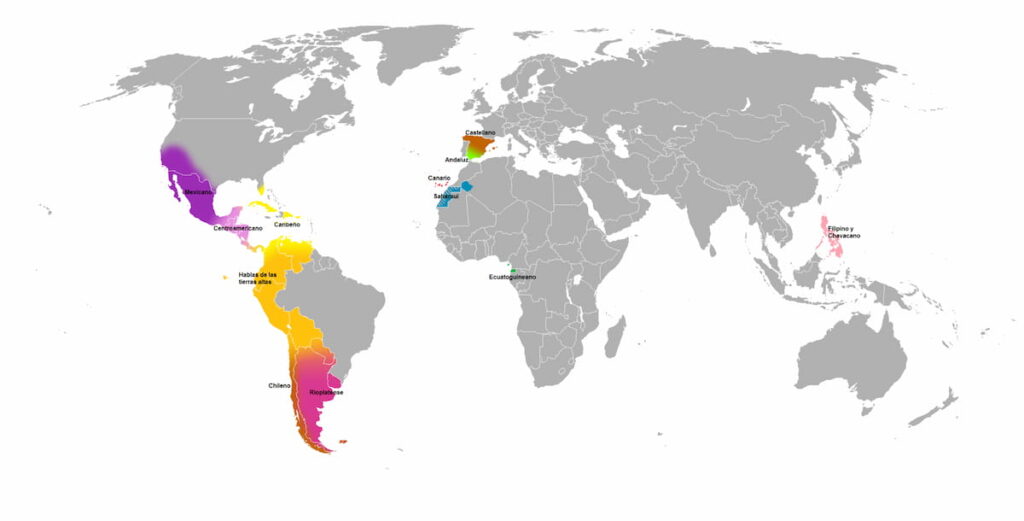
4. Castúo
The autonomous community of Extremadura, Spain, has another dialect called Castúo. In 1921, Luis Chamizo Trigueros came up with the linguistic term.
The phonology of Andalusian Spanish is alike. Extremaduran and Leonese have some parallels in grammar rules and morphology.
Through simplification, the consonant group NF becomes F, RJ to J, and RN to NN. Usually, the “R” sound at the end of a word is silent.
5. Murcian Spanish
This variant is expressed in the autonomous community of Murcia in southeast Spain.
It has a certain level of usefulness in Almansa in Albacete (Castilla–La Mancha), Alto Vinalopó in Alicante (Valencia), and Vega Baja del Segura.
Aragonese, Castilian, and Catalan share parallels and contrasts with the Murcian Spanish idiom.
6. Other dialects of Spain
Despite Spanish being the dominant language, Spain is home to many other languages in myriad areas.
The list comprises Basque, Catalan, Galician, and Valencian. 1% to 8% is the range of the total number of speakers. Also, recognized but unofficial languages exist, such as Aragonese, Asturian, Leonese, and many others.
Some believe that these are nothing but dialects. However, these are separate languages. It would be wrong to refer to them merely as dialects.
Plus, some people can speak a blend of these languages and Spanish. The tones, vocabulary, and grammar mix give you a new vibe.
E.g., the Spanish speakers of Aragonese in Aragon and Basque in the Basque region. Or Galician in Galicia, Valencian in Valencia, Catalan in Andorra, Balearic Islands, and Catalonia.
Some cities have their own versions. Spanish types, such as those in Madrid, La Mancha, and Central-Southern Toledo, are excellent examples.
B. American Spanish
In the late 15th century, Christopher Columbus discovered and colonized Central and South America. The result was Spanish expansion throughout the two continents.

The region was mainly under Spain’s control, with only a few exceptions, like Brazil. That is the reason this language is spoken throughout Latin America.
In North, Central, and South America, a collection of Spanish dialects is spoken and referred to as American Spanish.
There are local and national variations among the Spanish-speaking areas of Latin America.
The different dialects in this region have yet to have a consensus. Despite that, these are a few of the most famous and recognizable ones.
7. Paraguayan Spanish
The provinces of Misiones, Corrientes, and Formosa in Argentina and Paraguay speak this group of vernaculars.
Like other Spanish dialects, Paraguayan also shows differences. The variations are in crucial words, expressions, articulation, and grammar.
The contrast is mainly because of the combination of Guaraní natives.
The official languages of Paraguay are Guaraní and Spanish, making it a bilingual country. Like Spanglish (Spanish and English), Yopara is a mixture of Spanish and Guaraní.
Nearly half of the population speaks Yopara. Much of the Paraguayan Spanish dialect has been shaped by the Guaraní language. If you learn this variant, you’ll also pick up some Guaraní and vice versa.
8. Mexican Spanish
Mexico has the most noteworthy number of native Spanish speakers globally. The Spanish-speaking population surpasses that of any other nation by over two times.
With roughly 99% of Spanish speakers in vast Mexico, it refers to an immense collection of varieties and sociolects here. You may take the Spanish SIELE test to evaluate your level, as it is not only based on Castilian.
Mexican accents, wording, and grammar practices differ from those of Spain. They use a great deal of colloquial and slang for their daily conversations, which are unique to the area.
It’s believed to be the best Spanish in Latin America because of the clarity and ease of understanding of its sound. Yucatec Maya, Nahuatl, Tzotzil, Mixteco, and American English influenced Mexican Spanish dialects.
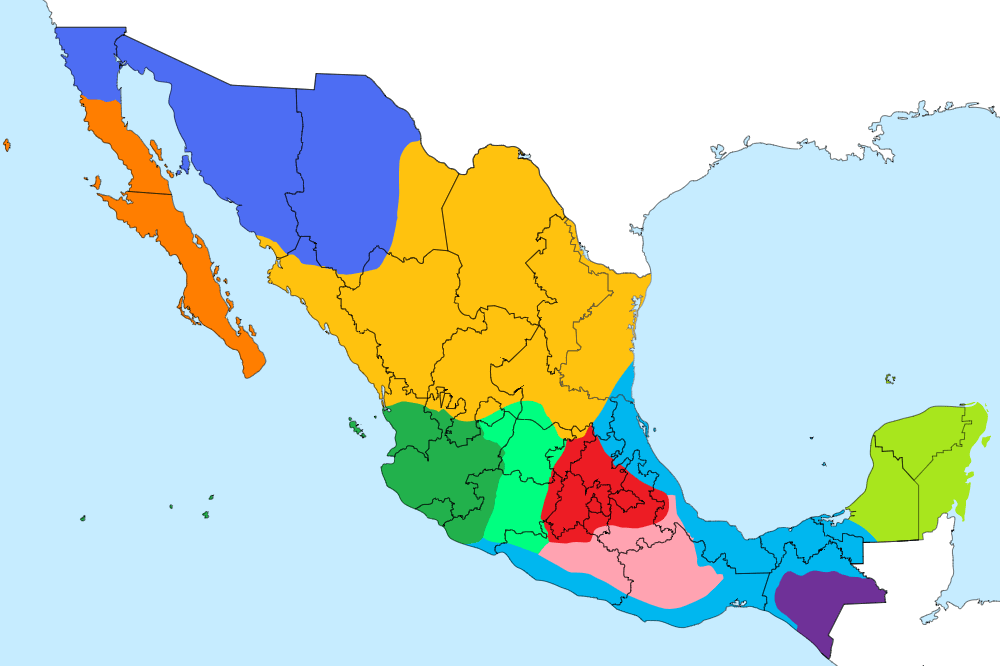
There are 10 broad Spanish varieties of Mexico. The following is the list.
- Altiplano (central variant)
- Bajacaliforniense (peninsular northern variant)
- Bajío (lowlands variant)
- Costeño (coastal variant)
- Chiapaneco (south-eastern like Central American Spanish)
- Norteño del (western northern variant)
- Norteño del (eastern northern variant)
- Sureño Central (central southern variant)
- Occidental (western variant)
- Yucateco (eastern variant)
9. Colombian Spanish
Almost all Colombians speak Spanish. The evidence suggests that this country is one of the most linguistically homogeneous on earth.
Colombia is an immense and culturally diverse nation. This explains the country’s many Spanish varieties, dialects, and accents. Geographical reasons rather than linguistic ones are the leading cause of the variation.
For example, Medellín, Cali, Chocoano, Llanero, Costal, Insular, Opita, Cundiboyacense, Paisa, Caleño, and Santandereano are distinct.
They speak the standard Colombian Spanish in the capital, Bogotá. The sounds are apparent and with no strange articulations. That could explain why most people consider it neutral Spanish.
10. Rioplatense Spanish
This dialect is also called Rioplatense Castilian or River Plate. They mainly communicate this in Uruguay’s Río de la Plata Basin and Argentina.
Rioplatense has integrated many European tongues like English, French, and German words and phrases.
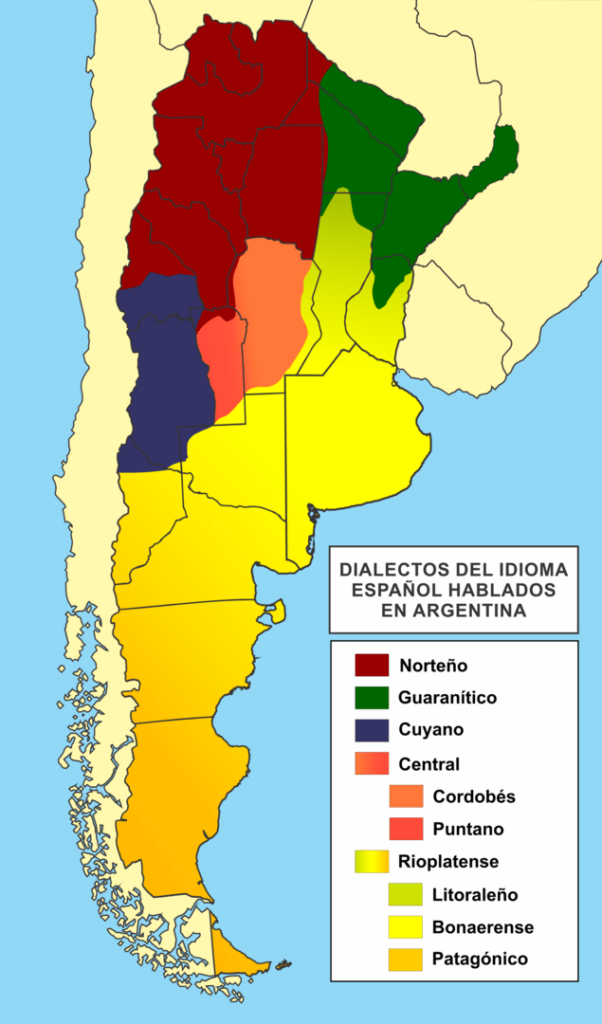
This region, particularly Buenos Aires, had many Italian immigrants during the 18th and 19th centuries. The tone and inflection resemble Italian as an outcome.
It varies from other Spanish dialects in multiple ways. For example, it replaces Tú with Vos and uses “sh” for “y” and “ll.” Those unfamiliar with this dialect may find it tough since verb conjugation also varies.
11. Chilean Spanish
There are multiple Spanish language varieties in Chile. Chilean one stands out from other tongues. The variation is because of distinct words, grammar, pronunciation, and slang use.
Many regular and informal terms in this text are not found in standard or other Spanish dialects of Central or South America.
The variation and social classes are also because of Chile’s long and narrow shape.
A few discrepancies exist between the dialects spoken in the north, central, and south. The far north and south of the country have some noticeable variations.
Chilean Spanish is a tricky language to grasp for Spanish learners, travelers, and foreigners. The usage of local slang, expressions, and fast native speaking is the top cause of this issue.
12. Caribbean Spanish
This dialect is spoken in Cuba, Puerto Rico’s Caribbean islands, and the Dominican Republic. It is also valuable on the shores of Venezuela, Panama, and Colombia.
The words become shorter by leaving out certain consonants, such as R, D, S, etc. For instance, Para becomes Pa, and Está becomes ‘Ta. The letter “R” is often pronounced as “X” and aspirated in Puerto Rico.
Words from other languages such as English, French, and African have also influenced it. Also, the Caribbean dialect has adopted many terms and phrases from the local languages.
European and Caribbean Spanish have a vocabulary difference because of this. Also, this dialect is swift. The difficulty of these can make it hard for new language learners.
13. Central American Spanish
El Salvador, Costa Rica, Panama, Guatemala, Honduras, and Nicaragua all speak Central American dialects. It encompasses the southwestern part of Mexico as well.
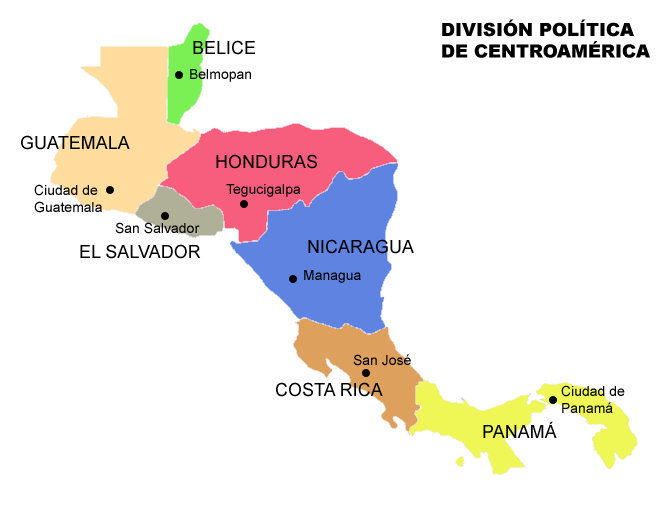
While most words are uniform, every nation has distinct local expressions and idioms.
Other languages and historical factors have created variations in accents and sounds in some regions of Central America.
14. Andean Spanish
Another one, Andean Spanish, is useful in northern South America. It holds value in central Andes, south Colombia, north Chile, Peru, Bolivia, Ecuador, and Northwest Argentina.
This American Spanish dialect is spread across seven nations and is highly prevalent. Because of its wide presence, it has many subdialects and varieties.
Many consider Andean Spanish the most authentic and purest in the Western Hemisphere. Maybe it’s because the sound in the area is more precise, easier to understand, and well-pronounced. To sum up, it’s a joy to hear.
Even though it’s clear and soft, the pronunciation is distinct from the rest of Latin America, the Caribbean, and Central America.
It gives more essence to the last letters of terms than other dialects. It distinguishes between ‘LL’ and ‘J’ even though they are pronounced likewise.
15. Peruvian Ribereño Spanish
Peruvian Coastal or Peruvian Ribereño Spanish is the term given to the language spoken in the coastal region of Peru.
Four distinct variations of Peruvian Spanish exist.
Most people in Peru speak the Peruvian Coast Spanish, which is viewed as the standard language of the country.
Limeños, which is practical in Lima, is another name for it. Foreigners and Andean variants have also had an effective influence on this dialect.
There are three more: the sociolect of inland immigrants and the Northern and Southern sorts.
16. Equatorial Spanish
Equatorial Spanish is also pointed out as Coastal Colombian-Ecuadorian or Chocoano. Their language is primarily spoken in the coastal region of Ecuador and the bordering coast areas of northern Peru and southern Colombia.
The Caribbean and Peruvian Coast varieties have some resemblances to this variant. For example, the final syllable /s/ can either be aspirated or elided and the sound [h] is identified as the /x/ sound.

The Spanish dialect spoken in northern coastal Peru has unique phonetic features. This is despite its nearness to nearby dialects.
C. Dialects of Spanish in other parts of the world.
Most Spanish-speaking individuals live in Spain, North, Central, and South America. While it may be surprising, many still speak Spanish in other parts of the world.
Let’s know about the different Spanish spoken in various parts of the world.
17. Llanito
The language spoken in Gibraltar is quite similar to that of Andalusian Spain. Still, it took many words, grammar rules, and sounds from British English and has an impressive and distinctive vocabulary list.
So, the combination of UK English and Andalusian Spanish is called Llanito. It has also taken many loanwords from other languages like Portuguese, Maltese, Genoese, etc.
18. Spanish in the Philippines
The Philippines no longer recognizes Philippine Spanish as an official language. It had a notable effect on the native languages of the nation, including the national language, Filipino, at one point.
The existence of several Spanish-influenced creoles can be attributed to their historical roots. Many people refer to them as Chavacano, and they are spoken in various locations.
Approximately 1 million people speak Chavacano, although the exact number is unknown.
There are thousands of Spanish loanwords in Filipino. Using Latin scripts in the Philippines is also traced to the colonial past of Spain.
19. Equatoguinean
Equatorial Guinea is the only African country where the official language is Spanish. There are almost 1 million Spanish speakers, although the exact number varies.
Equatoguinean Spanish is more equivalent to Peninsular than to Latin American.
Using articles is optional as an illustration. They replace Usted with Tú verb conjugation, Vosotoros with Ustedes, and “en” with “a.”
Indicative and subjunctive moods have little difference. German immigrants living in Cameroon and native Guineans have influenced this African-Spanish dialect. It affects the pronunciation features and words.
Wrapping Up: Which Spanish variant to learn?
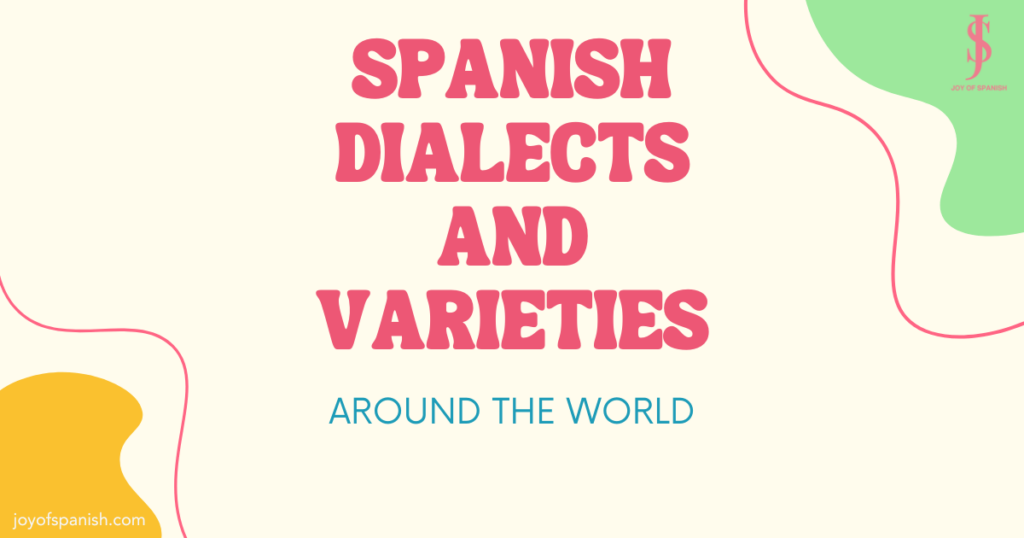
As you can see, there are tons of Spanish dialects out there. If you’re learning Spanish, you might be curious about which dialect would be most helpful.
It depends on your reason for learning Spanish, intent, and interest.
If you have a particular place in mind, use the dialect of that region. If you plan to move to Argentina or work with Argentinians, aim to study Rioplatense.
Do you need a special place in mind? Would you like to advance your career in Spanish? Or would you rather travel and broaden your personal and professional horizons?
Selecting Spain’s standard Spanish or Castellano is ideal if that’s the case. Opting for a Mexican one is a sensible choice. It’s commonly spoken in the USA, Mexico, and some parts of North and South America.
You can understand every kind of Spanish with practice, time, and effort, regardless of the dialects you focus on.
Don’t worry if you feel overwhelmed by this list. It’s unnecessary to know every dialect. Even natives face difficulties comprehending.
The standard version suits all goals if you don’t plan on living in a remote area. Your passion and perseverance are the keys to success!
Do you have any opinions to share? Share in the comments below.
